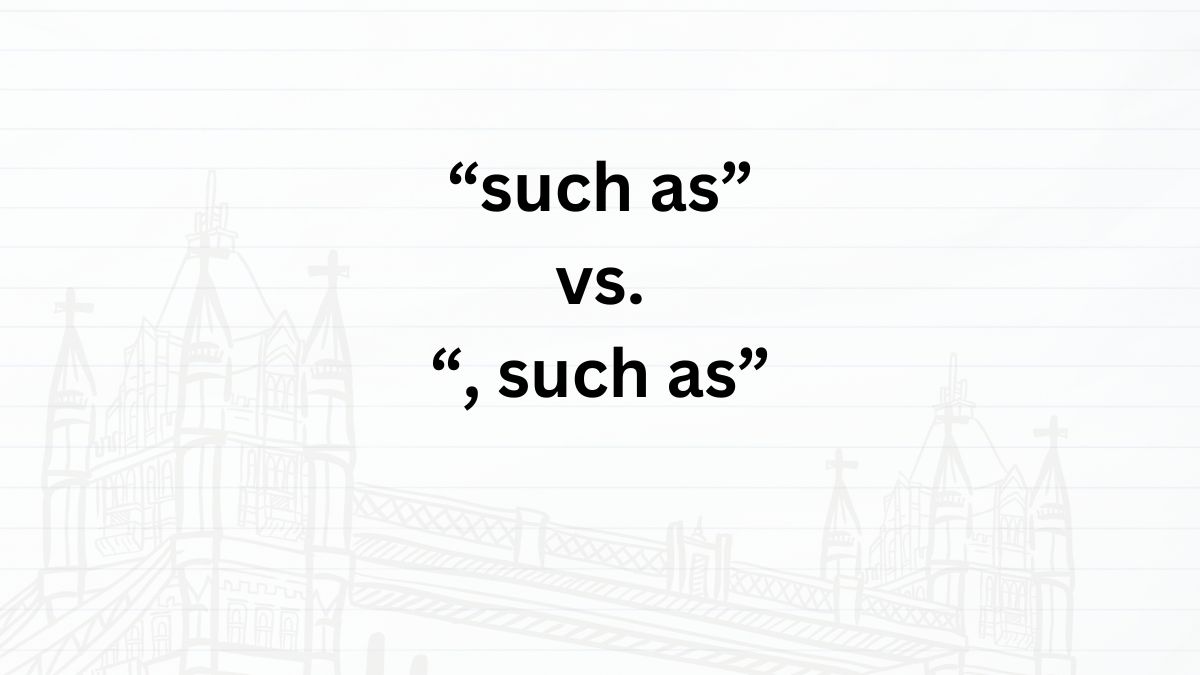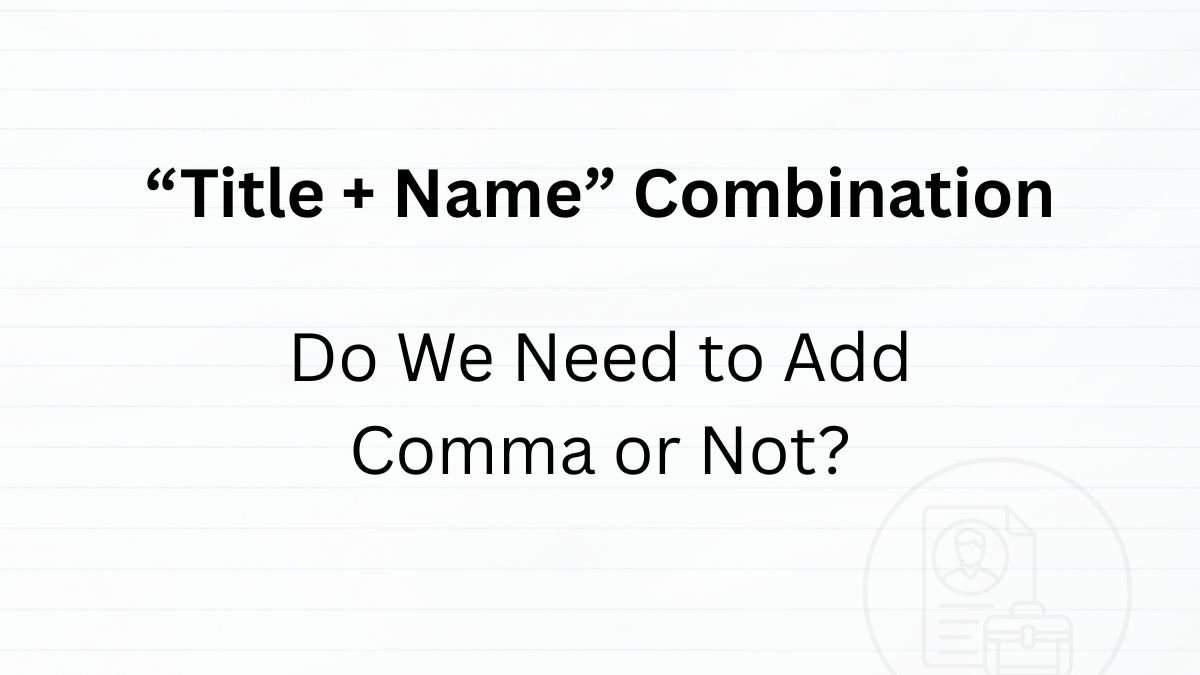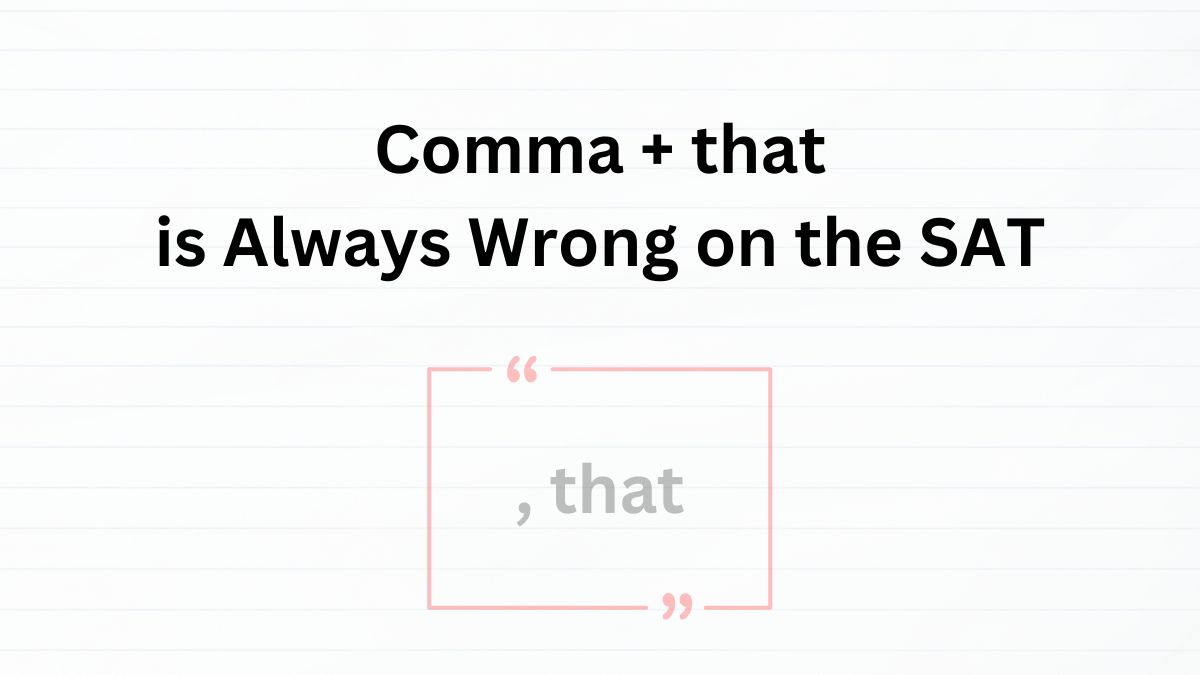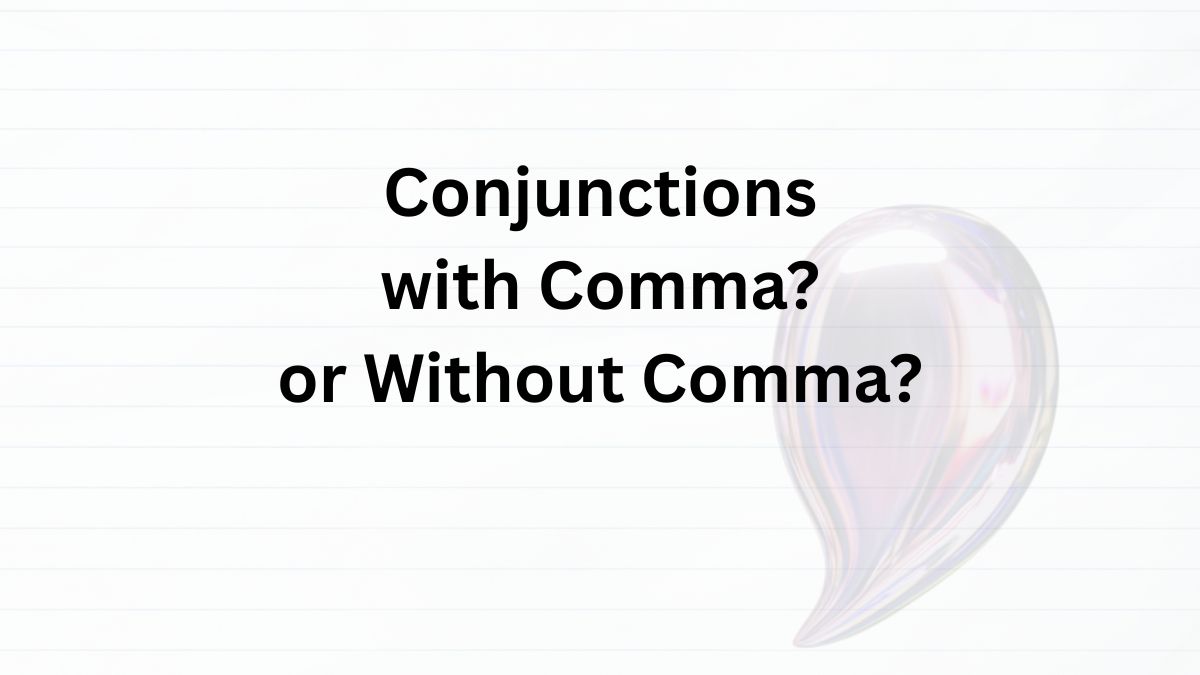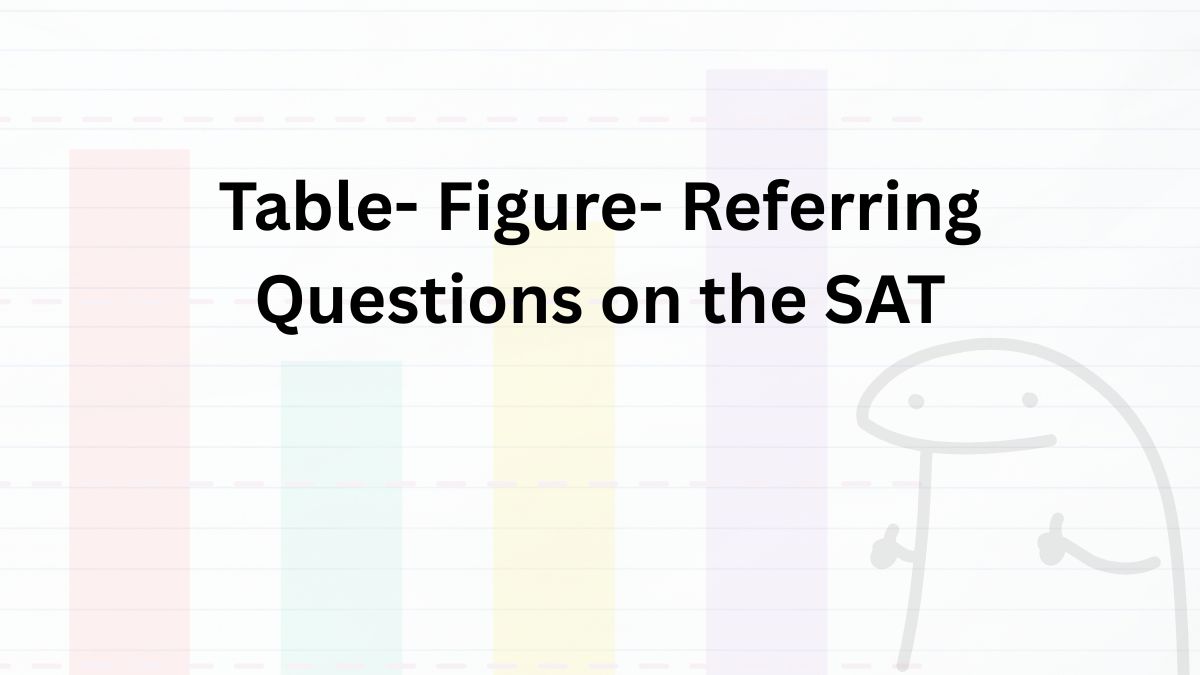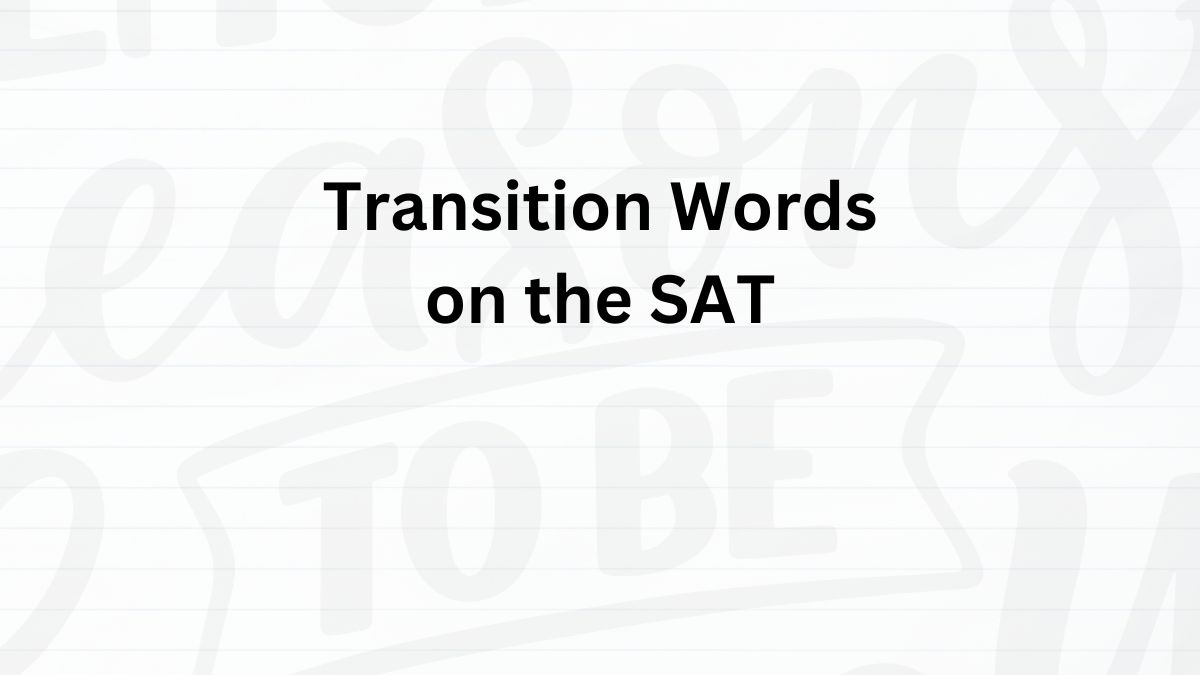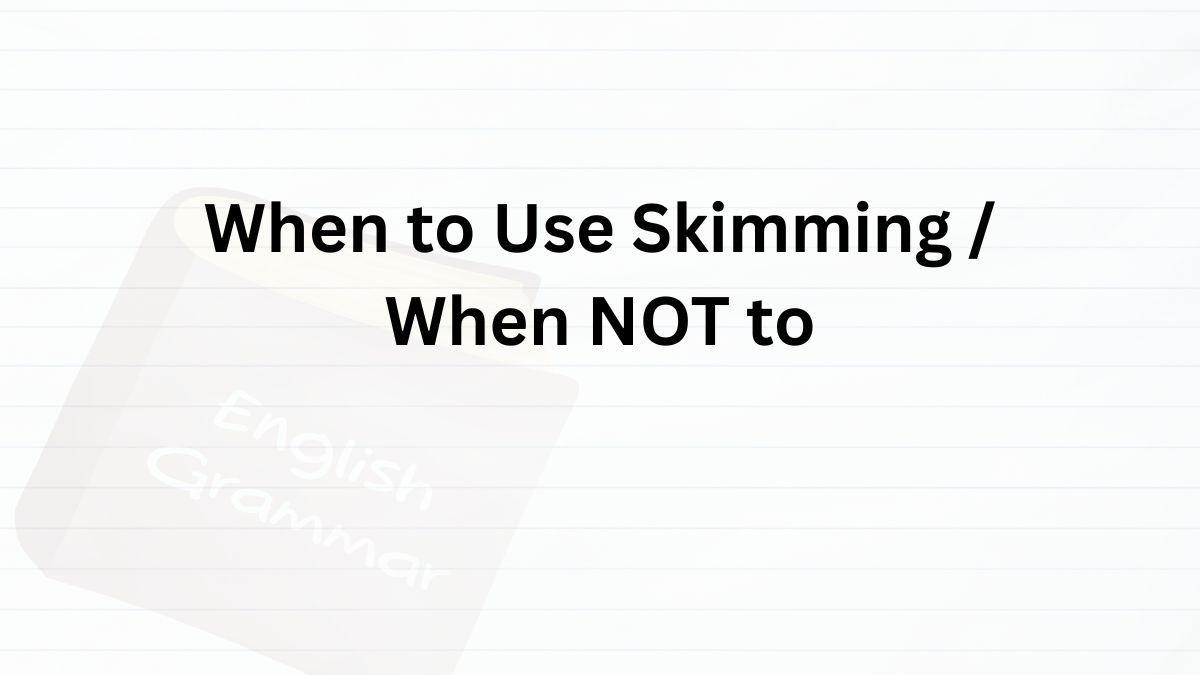
Does Focusing on the Blank Work in the SAT Grammar Questions?
Table of Contents
On the Digital SAT, you should aim to answer each grammar question in about 30 seconds. To stay on pace, it’s important to adjust your approach depending on the type of question.
Skimming can be a powerful strategy for certain Reading and Writing questions. But if you use it indiscriminately, it can actually slow you down and hurt your accuracy.
In this article, we’ll go over which kinds of grammar questions are best suited for skimming and what key details you should pay attention to when applying the technique.
Skimming Technique
Skimming means reading quickly while focusing only on the most important parts. On the SAT, this can be helpful, especially in Reading and Writing grammar questions where you only need to check the words or phrases before and after a blank. In these cases, skimming can save valuable time. Let’s look at the following question.
Explanation
If you look at the sentence around the blank, you’ll notice something important:
- The part before the blank is incomplete; it doesn’t have a verb.
- The part after the blank is also incomplete; it too lacks a verb.
On the SAT, every sentence has to be grammatically correct. This means the test is unlikely to place two incomplete fragments side by side. The only logical conclusion is that the two parts must work together to form one complete sentence.
Indeed, the sentence “dropping even a single letter often, however, caused the entire page to be reset and delayed the completion of the book” is fully grammatical. The commas around however show that it’s a non-essential element, so we can set it aside and the sentence still works.
Because neither side of the blank is an independent clause, a semicolon can never be correct here. Remember, one of the main jobs of a semicolon is to link two independent clauses.
But don’t treat skimming as a one-size-fits-all approach. If you use it in the wrong type of question, it will actually slow you down or hurt your accuracy. For instance, when a question asks you to pick the correct verb tense, you need to glance through the whole passage to see what tense is being used overall. In such cases, skimming won’t be enough.
When Should You Use the Skimming Technique for Grammar Questions?
Skimming can definitely save time on the SAT, but it’s not always the right move. The key is knowing when to use it and when to slow down. In general, if a grammar question shows the following features, skimming is a smart choice:
Signs of Using Skimming Approach
- The question is about conjunctions.
- The question is about punctuation, such as colons or semicolons.
- The question is about subject–modifier placement.
For grammar questions in the Reading and Writing section, it’s a good habit to glance at the answer choices first. Doing so helps you guess what rule is being tested. If you see that it’s one of the three topics above, skimming will likely be the fastest and most reliable approach.
Questions About Conjunctions and Punctuation
When you see options consisting of conjunctions and punctuations, you can merely focus on the blank part and its surrounding. For this type of questions, the first thing you should do is to check if the parts before and after the blank are both independent clauses or not.
Which Option to Select
- Both are independent clauses: conjunction, semicolon, colon, or relative pronoun will be the answer.
- One of them is a phrase: a simple comma will be the answer.
If you still have questions about differences of independent clauses, dependent clauses and phrases, please also refer to the following article.
Now, let’s try one SAT-like grammar question.
Explanation
If you look at the answer choices, it’s clear this question is about conjunctions and punctuation. That’s a good sign. It means you can solve it by skimming, just checking the parts right before and after the blank.
Let’s check if both sides are independent clauses:
- Before the blank: independent clause.
- After the blank: independent clause.
Since both are independent clauses, the correct answer must be something strong enough to connect them, such as a relative pronoun, a conjunction, or a punctuation mark like a semicolon or colon. A plain comma can’t do the job here because commas alone cannot join two full sentences.
With that in mind, the only suitable option is ; however, which correctly links the two independent clauses.
Questions About Subject-Modifier Placement
Subject-modifier placement is one of the trickiest grammar topics you’ll face on the SAT. Many students get stuck here because the sentences can feel confusing at first glance. The good news is that once you know the rule and how to apply it, these questions become very predictable. With a bit of practice, you’ll be able to spot the right answer quickly and avoid the common traps.
Definition of Subject-Modifier Placement
Subject–modifier placement is about making sure the subject of a sentence matches the opening phrase or dependent clause that comes before it.
A sentence is affected by this rule when two things are true:
(1) The sentence begins with an introductory phrase or dependent clause.
(2) The “agent” (the person or thing doing the action) is not clearly stated in that opening part
When these conditions are met, the subject of the main clause that follows must supply the missing agent. In other words, the structure should look like this:
Introductory phrase/dependent clause + comma + independent clause

To recognize whether a question is testing subject–modifier placement, take a quick look at the answer choices. If the main difference between the options is the subject, while the rest of the sentence stays the same, that’s a strong clue that the question is about this rule.
For these questions, you don’t need to read the whole sentence in detail. Focus instead on the phrase before the blank and the subject that follows it. Matching those correctly will usually lead you straight to the right answer.
Explanation
You can quickly tell that this question is about subject–modifier placement. Two clues give it away:
- The sentence begins with an introductory phrase.
- That phrase doesn’t state the agent. In other words, it doesn’t tell us what is widely used.
Because the agent is missing, it must appear as the subject of the main clause. Looking at the answer choices, only “synthetic fertilizers” fits as the agent, which makes it the correct answer.
When Should You Avoid Skimming?
Skimming isn’t a strategy you can apply everywhere. If you try to use it in the wrong type of grammar question, you’ll not only lose time but also risk picking the wrong answer. Here are the main cases where it’s better to slow down and read carefully:



